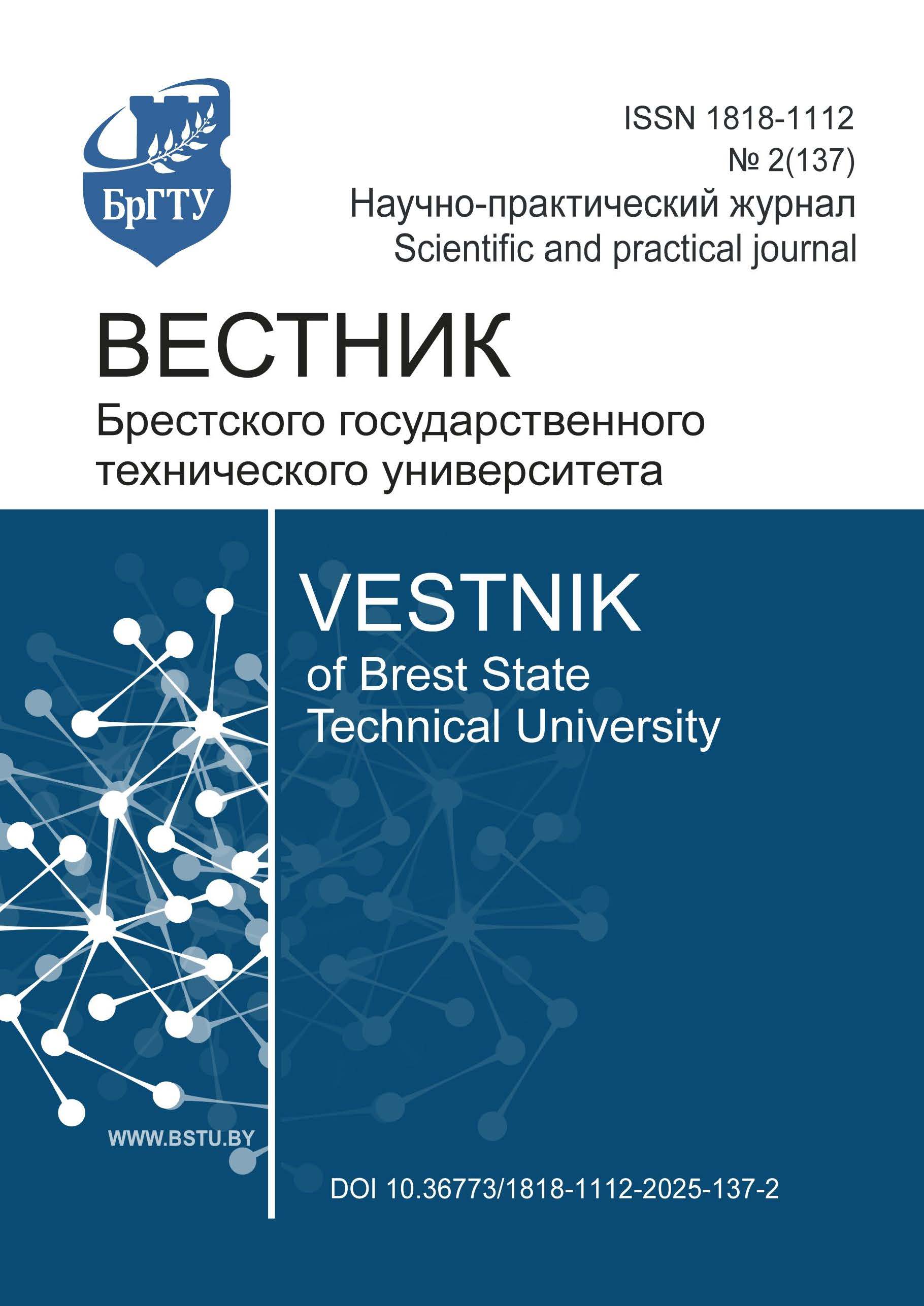EXPERIMENTAL STUDIES OF FOUNDATION PRECIPITATION MULTIFUNCTIONAL CENTER
DOI:
https://doi.org/10.36773/1818-1112-2025-137-2-42-49Keywords:
foundations and foundations, engineering and geological conditions, deformations, bearing soil layer, precipitation of buildings and structures, uneven precipitationAbstract
Foundation sedimentation is a critical parameter in assessing the stability and durability of buildings. For operational structures, precipitation monitoring requires a special approach, since traditional methods (for example, static tests) may not be applicable due to the risk of structural damage. One of the methods of checking the proper conditions of structures of buildings and structures to confirm their operability and behavior under load is verification based on test results [1]. The loading method, based on the controlled application of a payload to the foundation followed by the measurement of deformations, makes it possible to evaluate the behavior of the building's foundation and predict their behavior under load, while minimizing the risks of deformations and structural failures, as well as optimizing costs during design work during the modernization (reconstruction) of the building. Modern technologies such as geodetic monitoring using electronic total stations, GPS sensors and fiber-optic systems ensure continuous monitoring of precipitation in real time. These data are integrated with numerical modeling in software complexes (for example, PLAXIS or MIDAS), which makes it possible to refine forecasts and adapt the foundation structure to changing conditions. Experimental studies of the precipitation of the foundations of the multifunctional center included the installation of measuring devices (geodetic grades) on the columns of the studied foundations with geodetic monitoring, using electronic total stations. The load was created in stages using a hydraulic ballast installed on the ceiling of the building. After each stage of loading, vertical movements were recorded, which made it possible to plot load-sediment graphs and determine soil deformations. This method proved to be effective for the building under study, as it combined sufficient accuracy with minimal risks. However, its application requires an integrated approach: a combination of geotechnical calculations, modern monitoring tools and adaptation to the conditions of a particular facility. The loading method occupies an intermediate position between theoretical models and field tests, providing a balance between practicality and reliability.
References
Основы проектирования строительных конструкций = Асновы праектавання будаýнiчых канструкцый : СН 2.01.01-2022. – Введ. 30.06.2022. – Минск : Минстройархитектуры, 2022. – 122 с.
Барвашов, В. А. Расчет осадок и кренов сооружений с учетом неопределенности свойств грунтовых оснований / В. А. Барвашов // Геотехника, 2016. – № 1. – С. 4–21.
Камаев, В. С. Экспериментально-теоретические исследования жесткостных параметров строительных конструкций и деформируемого основания / В. С. Камаев // Известия Петербургского государственного университета путей сообщения – СПб. : ПГУПС, 2007. – № 3 (12) – С. 126–136.
Крутов, В. Н. Основания и фундаменты на насыпных грунтах / В. Н. Крутов. – М. : Стройиздат, 1988. – 224 с.
Коновалов, П. А. Основания и фундаменты реконструируемых зданий / П. А. Коновалов. – 2-е изд. – М. : Стройиздат, 1988. – 287 с.
Механика грунтов, основание и фундаменты: учебное пособие для строит. спец. вузов / С. Б. Ухов, В. В. Семенов, В. В. Знаменский [и др.] ; под ред. С. Б. Ухова. – 3-е изд., испр. – М. : Высш. школа, 2004. – 566 с.
Пойта, П. С. Основания и фундаменты : учеб. пособие / П. С. Пойта, П. В. Шведовский, Д. Н. Клебанюк. – Минск : Вышэйшая школа, 2020. – 400 с.
Морарескул, Н. Н. Основания и фундаменты в торфяных грунтах : учеб. пособие / Н. Н. Морарескул. – СПб. : Петербургский гос. уни-т путей сообщения, 1999. – 49 с.
Multi-storeved bulding slab foundation settlement / P. S. Poita, N. N. Shalobyta, T. P. Shalobyta, E. N. Shalobyta // Vestnik of Brest State Technical University. – 2023. – № 3 (132). –
P. 11–14. – DOI: 10.36773/1818-1112-2023-132-3-11-14.
Пойта, П. С. Некоторые проблемы проектирования и строительства фундаментов зданий и сооружений / П. С. Пойта, Н. Н. Шалобыта, Т. П. Шалобыта // Материалы ХХIII Междунар. науч.-практ. конф. «Перспективные направления инновационного развития и подготовки кадров», 31 октября – 2 ноября 2024 г., Брест. – Брест, 2024. – С. 280–288.
Общие положения по проектированию оснований и фундаментов зданий и сооружений = Агульныя палажэннi па праектаванню асноý i фундаментаý будынкаý i збудаванняý: СП 5.01.01-23. – Введ. 27.02.2023. – Минск : Минстройархитектуры, 2023. – 144 с.
Инженерно-геологические изыскания для строительства. Часть 1. Общие правила производства работ : СП 11-102-97. Введ. 15.08.1997. – М. : Госстрой РФ, 1977. – 37 с.
Инженерные изыскание для строительства = Iнжынерныя вышуканнi для будаýнiцтва : СН 1.02.01-2019. – Введ. 26.12.2019. – Минск : Минстройархитектуры, 2020. – 109 с.
Бусел, И. А. Прогнозирование строительных свойств грунтов / И. А. Бусел. – Минск : Наука и техника, 1989. – 246 с.
Спортивно-оздоровительный и торгово-развлекательный центр на пересечении ул. Казимировской – ул. Каменногорской в г. Минске : технический отчет по инженерно-геологическим изысканиям. – Минск, 2014. – 13 с.
Грунты. Классификация : ГОСТ 25100-2020. – Взамен ГОСТ 25100-2011 ; введ. 01.01.2021. – М. : Стандартинформ, 2020. – 38 с.
Грунты. Методы полевых испытаний статическим и динамическим зондированием. ГОСТ 19912-2012. – Взамен ГОСТ 19912-2001 ; введ. 01.11.2013. – М. : Стандартинформ, 2013. – 23 с.
Пойта, П. С. О взаимодействии определенных в лабораторных условиях параметров грунтов с данными по статическому зондированию / П. С. Пойта, Т. П. Шалобыта // Вестник БрГТУ. Серия Строительство и архитектура. – 2005. – № 2. – С. 83–85.
Общие положения по обследованию строительных конструкций зданий и сооружений. СП 1.04.02-2022. − Введ. 02.03.2022. – Минск : МАиС, 2022. − 73 с.
Основы проектирования конструкций. Оценка существующих конструкций: СТБ ISO 13822-2017. − Введ. 11.04.2017. – Минск : Госстандарт, 2017. – 40 с.
Рекомендации по оценке прочности, жесткости и трещиностойкости сборных бетонных и железобетонных изделий, периодичности их испытаний нагружением и применению методов неразрушающего контроля. Р 1.03.042.07. – Брест : БрГТУ, 2010. – 48 с.
Справочник геотехника. Основания, фундаменты и подземные сооружения / под общ. ред. В. А. Ильичева, Р. А. Мангушева. – М. : Изд-во АСВ, 2014. – 728 с.
Downloads
Published
How to Cite
Issue
Section
License

This work is licensed under a Creative Commons Attribution-NonCommercial 4.0 International License.
The work is provided under the terms of Creative Commons public license Attribution-NonCommercial 4.0 International (CC BY-NC 4.0). This license allows an unlimited number of persons to reproduce and share the Licensed Material in all media and formats. Any use of the Licensed Material shall contain an identification of its Creator(s) and must be for non-commercial purposes only. Users may not prevent other individuals from taking any actions allowed by the license.










